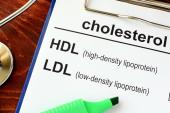Pharmacist-Led Intervention Slashes LDL and BP in 10,000 Patients
The program was successful across multiple patient groups, including those typically underserved by medicine, says PI.

A remote, algorithm-based management program significantly improved control of blood pressure and LDL-cholesterol levels in patients participating in an ongoing program at one US health system, a new study shows.
The program, which relies on “navigators” to engage with patients through phone calls, texts, and emails, as well as pharmacists to prescribe and adjust medication as necessary, led to significant reductions in both of these cardiovascular risk factors in all populations, including those traditionally underserved in medicine, such as Black, Hispanic, and non-English-speaking patients.
Alexander Blood, MD (Brigham and Women’s Hospital, Boston, MA), who presented the results of the management program today at the American Heart Association 2021 Scientific Sessions, reported that systolic blood pressure was reduced by 10 mm Hg and LDL cholesterol by 45 mg/dL in approximately 10,000 participants enrolled in the program at Mass General Brigham health system.
One year ago, Benjamin Scirica, MD (Brigham and Women’s Hospital), presented results on the first 5,000 participants enrolled in the program, and these new findings are right on track, according to Blood. “The lipid and blood pressure reductions are really in line with what we’ve experienced since we instituted the program back in 2018,” Blood told TCTMD. “It’s nice to see that at-scale we continue to have these robust results.”
The remote, algorithm-driven management program, which comes at no cost to patients, consists of three components: navigators, pharmacists, and digital technology. The navigators are unlicensed personnel who act as the primary point of contact with patients. Through phone calls, texts, and email, they provide patient education and collect data. Next, the pharmacists independently prescribe and titrate medical therapy as part of the Collaborative Drug Treatment Program, with physicians providing support as needed. Finally, the technology itself helps manage patient relationships and assists in communication, education, data integration, care coordination, and delivery of care.
To TCTMD, Blood likened the program to a warfarin clinic, where the physician makes an initial referral for a patient in need of managing blood pressure and/or LDL-cholesterol levels, but the clinic takes over. That largely removes the physician from day-to-day patient management, such as lab monitoring, medication prescription, and management of symptoms and/or side effects, and was designed to break with status quo and address gaps in care.
“There was a desire to change the paradigm,” said Blood. “Providers felt that the ongoing, iterative titration of medication at 3- to 6-month intervals was not doing the best by the patient. For patients, they similarly felt, ‘I made the medication changes you recommended but I’m not going to see you for another 6 months, so what’s going on in the meantime?’”
The remote management model, on the other hand, allows for iterative monitoring and management, he said, and “nudges” to the patient and provider to help them get to the guideline-recommended targets.
Big Drops in BP, LDL Slashed
During the late-breaking science session, Blood presented data on 9,547 patients enrolled in the program, including 6,887 and 3,367 in the lipid and hypertension programs, respectively. One-third of patients were non-white and 8% didn’t speak English. Of those in the lipid program, 29% had atherosclerotic cardiovascular disease (ASCVD), 22% had diabetes, 26% had LDL levels > 190 mg/dL, and 23% were considered high-risk primary prevention patients.
Of those enrolled in the lipid program, 40% completed all of their recommended management steps to optimize their therapy, which put them in “maintenance” mode, and 23% remained in “active medication” management after 3 months of follow-up. Similarly, in the hypertension arm 44% of patients completed all of their recommended management steps and were considered in maintenance while 15% were in active medication management. In total, 37% and 41% of those in the lipid and hypertension arms were unreachable, withdrew, or were referred to their physician for further care.
For all patients in the hypertension program, baseline systolic blood pressure was reduced from 145 to 135 mm Hg at the time of program exit (P < 0.001). Diastolic blood pressure was reduced from 84 to 78 mm Hg (P < 0.001). For the 1,492 patients in maintenance mode, systolic blood pressure was reduced from 137 mm Hg at baseline to 125 mm Hg while diastolic blood pressure declined from 79 to 72 mm Hg (both P < 0.001).
In the lipid program, LDL cholesterol was reduced from 145 mg/dL at baseline to 100 mg/dL at the time of program exit (P < 0.001). For the 2,753 patients in maintenance, LDL cholesterol declined from 140 mg/dL to 70 mg/dL (P < 0.001). In the maintenance arm, these reductions were achieved by increasing the use of high-intensity statins, prescribing ezetimibe, or prescribing a PCSK9 inhibitor. Additionally, they reduced the number of patients not taking any medication at all.
Among the patients in maintenance mode, investigators observed significant reductions in systolic/diastolic blood pressure and LDL-cholesterol levels across a range of populations, including white subjects as well as Black, Hispanic, and “other race” participants, and even those who didn’t speak English.
For Blood, that the remote management program delivered equitable care across different populations was extremely important.
“There has been a lot of concern since COVID-19 and the rapid shift and transition to digital and remote care that we are leaving people behind, or we’re exacerbating health inequities that already exist,” said Blood. “Really, the results of our trial don’t completely refute that or say it’s not a problem we have to worry about, because I absolutely think we do. But if you structure the way you’re reaching out to patients, engaging them, and communicating with them—if you’re intentional and equitable in the way you make that type of outreach—it’s possible to engage, enroll, and help patients reach maintenance at similar rates across these subpopulations that are traditionally underserved in medicine.”
Keith Ferdinand, MD (Tulane University School of Medicine, New Orleans, LA), who commented on the study during the session, said digital technology had led to a “leap forward” in terms of managing cardiovascular disease risk factors, but that for it to be effective it needs to be provided to patients at low cost (or no cost). Like Blood, Ferdinand said the implementation of technology for patient care must be equitable and avoid exacerbating healthcare disparities “across the digital divide.”
Successful, but More Work Needed
Despite the success—more that 40% of patients in each program were able get to the maintenance phase—Blood said there is more work to do in order to reach those who withdrew or were lost to follow-up.
“There’s a significant proportion of patients who don’t complete the program,” he said, noting that it was mostly because they couldn’t be reached. “We make a significant effort. The navigators take the lion’s share of that, to engage patients and help them along this journey, but the reality is that this isn’t a clinical trial. It’s the implementation of an active, clinical management program and it reflects routine clinical practice in a lot of ways. Patients care about their health, but it’s not something that’s 24/7/365 on top of their mind. Life gets in the way.”
Continued improvements into making the program as seamless and integrative are important, but so is patient education. “It’s an area of growth for us, to do an even better job of shepherding patients through the program to achieve maintenance,” said Blood, adding that they hope programs of this kind can be implemented outside the Boston-based health system to the wider community.
Mitchell Elkind, MD (Columbia University Irving Medical Center, New York, NY), noted that while the remote-monitoring program was free to patients, it’s not free to the healthcare system. He also emphasized the importance of addressing some potential barriers to moving the project, which does involve a lot of operational work, to the broader community.
“It still remains a demonstration project, I think,” said Elkind. “The key will be can it be translated to other systems, larger systems. There were more than 100,000 phone calls made as part of that program—that’s a lot of calls—and there were 30 patient navigators, which can be quite a resource as well. So it’s not so easy to move it to another system, but it’s a great example that it can be done.”
Michael O’Riordan is the Managing Editor for TCTMD. He completed his undergraduate degrees at Queen’s University in Kingston, ON, and…
Read Full BioSources
Blood AJ, Cannon CP, Gordon WJ, et al. Digital care transformation: report from the first 10,000 patients enrolled in a remote algorithm-based cardiovascular risk management program to improve lipid and hypertension control. Presented at: AHA 2021. November 13, 2021.
Disclosures
- Blood reports grant support from the National Institutes of Health.





Comments